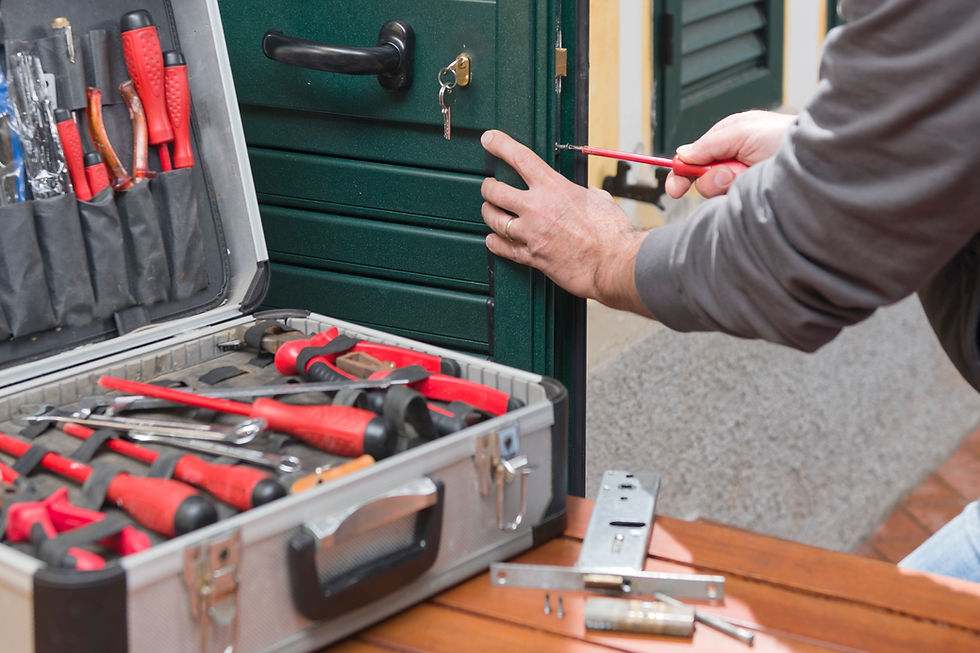
For construction professionals, industrial workers, and contractors, losing tools on the job site is more than just an inconvenience—it’s a costly problem that affects efficiency, security, and profitability. Every misplaced tool translates to wasted time, unnecessary expenses, and potential project delays. Despite efforts to track and manage tools, manual checklists, barcode scanning, and outdated inventory methods are inefficient and prone to human error.
Tool theft is another major concern, particularly in high-value construction projects. A single stolen drill or saw might not seem like a significant loss, but when theft becomes a recurring issue, businesses can experience thousands of dollars in lost equipment and downtime. Additionally, unsecured job sites often leave tools vulnerable to unauthorized use or misplacement.
To combat these challenges, RFID-powered smart tool tracking systems are becoming an essential solution for companies looking to increase job site security and prevent financial losses. By integrating real-time tracking, AI-enhanced inventory management, and automated alerts, smart tool tracking eliminates risks associated with missing or stolen tools.
Why Traditional Tool Tracking Methods Fall Short
For decades, workers and job site managers have relied on manual tracking systems to account for tools at the beginning and end of each shift. These systems include:
Sign-out sheets that require workers to manually log tool usage.
Barcode scanning that demands direct line-of-sight to verify tool presence.
Spreadsheets and inventory logs must be updated manually.
While these methods provide some level of accountability, they are highly time-consuming, prone to errors, and ineffective at preventing theft or loss in real time. Workers may forget to update records, tools can be borrowed without proper documentation, and misplaced equipment often goes unnoticed until it’s too late.
RFID and AI-powered solutions like Toolcase offer a more efficient, automated, and reliable approach to tool tracking. Unlike traditional methods, these systems continuously monitor tool movement, issue alerts when equipment is missing, and provide precise location tracking for every registered tool.
How Smart Tool Tracking Works
Smart tool tracking combines RFID technology, AI-driven insights, and smartphone integration to ensure tools are alwaysaccounted for. Each tool is tagged with an RFID chip, which transmits unique identification data to a compact RFID reader inside the toolbox or work vehicle.
As tools are removed or returned, the RFID reader automatically updates the digital inventory, eliminating manual tracking. If a tool is missing or moved beyond a designated area, the system sends an instant alert to the user via smartphone notification.
One of the key advantages of Toolcase is its ability to use dynamic triangulation technology, which allows the system to determine the precise location of a misplaced tool within millimeter accuracy. This means workers can quickly recover lost tools without unnecessary searching, reducing downtime and preventing unnecessary tool replacements.
Additionally, Toolcase provides scheduled and location-based scanning, ensuring all tools are accounted for before leaving the job site. This automated verification process prevents workers from leaving valuable equipment behind and minimizes accidental loss risks.
Enhancing Job Site Security with Real-Time Alerts
One of the most significant advantages of RFID-powered tracking is its ability to enhance job site security. Construction sites, workshops, and industrial facilities often contain high-value tools and equipment vulnerable to theft or unauthorized use.
With real-time alerts and geofencing technology, smart tool tracking prevents unauthorized tool movement. If a registered tool is taken outside a predefined area, the system immediately notifies the job site manager, reducing the risk of theft and unauthorized borrowing.
This added security layer ensures that businesses can hold workers accountable for tool usage and maintain a well-organized inventory without relying on inefficient manual checks.
Additionally, AI-driven insights help businesses detect unusual tool movement patterns. If a tool is used outside of regular working hours or moved unexpectedly, the system flags the activity, allowing site managers to investigate potential security risks.
Optimizing Tool Inventory Management with AI
Beyond preventing loss and theft, smart tool tracking systems improve overall inventory management by leveraging AI-driven automation. Unlike traditional methods that require workers to manually update logs, AI-enhanced inventory systems learn from tool usage patterns and predict potential issues before they occur.
Some of the key benefits include:
Automated Tool Recognition – Workers can simply take a photo of a tool, and AI assigns the correct name and category, eliminating manual data entry.
Predictive Maintenance Alerts – The system tracks tool usage frequency and condition, ensuring tools are serviced before breaking down.
Inventory Optimization – AI identifies which tools are frequently used and which remain unused, helping businesses make informed decisions about tool purchasing and redistribution.
By automating these processes, AI-powered smart tracking reduces administrative workload, improve tool availability, and eliminate unnecessary equipment purchases.
The Business Case for Smart Tool Tracking
For businesses that rely on tools for daily operations, lost or stolen equipment costs more than replacement expenses. The indirect costs—delays, missed project deadlines, and lost productivity—can significantly impact profitability.
Implementing smart tool tracking with RFID and AI reduces operational costs by:
Preventing expensive tool replacements.
Reducing downtime caused by equipment that is unavailable.
Eliminating manual inventory management labor costs.
Enhancing security and accountability among workers.
Additionally, companies that invest in smart tracking solutions gain a competitive edge by streamlining operations, improving workflow efficiency, and reducing waste.
Looking Ahead: The Future of Smart Tool Management
As industries adopt digital transformation, smart tool tracking will become the standard for job site management. RFID technology, AI-driven analytics, and real-time security alerts are shaping a more efficient, secure, and cost-effective approach to tool management.
Future developments in cloud-based tracking, IoT connectivity, and predictive analytics will further enhance automation and decision-making, allowing businesses to:
Track tools across multiple job sites from a centralized platform.
Detects equipment issues before they occur, minimizing repair costs.
Automate tool assignment and worker accountability without human intervention.
For companies looking to improve efficiency, reduce tool loss, and enhance security, investing in smart tool tracking solutions like Toolcase is a strategic move toward a more organized, cost-effective, and productive future.





